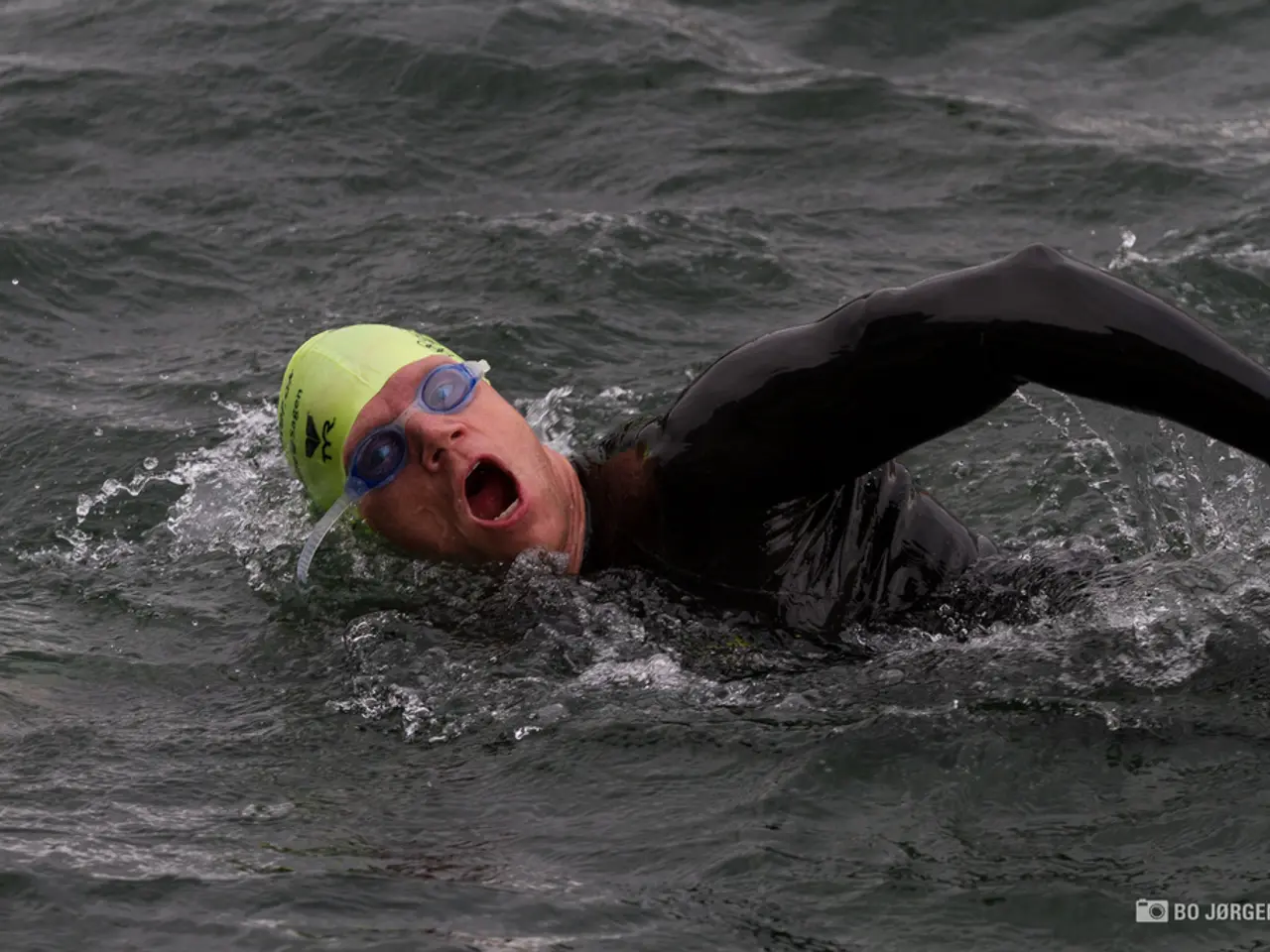Is it safe to go swimming with newly pierced ears?
In the world of body piercings, taking care of your new adornments is essential. One area that requires special attention is swimming, as antibiotic-resistant bacteria in recreational water can pose a risk to healed piercings that don't respond to standard treatments [1].
When it comes to swimming with piercings, the general rule of thumb is to wait until the healing process is complete. For cartilage piercings, this typically means avoiding water activities for at least 2-3 months [2][4]. However, swimming in pools may be safer after the first 2 days if absolutely necessary, but risks remain due to chlorine and bacteria in the water [5]. For natural bodies of water like lakes, rivers, ponds, or oceans, it is best to wait 2 to 3 weeks or longer because these environments are more prone to bacteria that can cause infection [3][5].
During the healing period, it's crucial to follow your piercer's aftercare instructions carefully. This includes rinsing piercings immediately with clean fresh water after swimming to remove chlorine, salt, bacteria, or other contaminants [6]. Gently clean around piercings with sterile saline solution using a clean cotton pad or sterile gauze [7].
After the healing period, it's essential to choose appropriate jewelry materials like surgical steel, titanium, or high-quality gold for swimming [8]. Custom-molded ear plugs from audiologists provide the best fit and protection for swimmers with healed piercings [9]. Avoid wax ear plugs, as they can break apart and leave residue around piercings [8].
When you do swim, keep the head above water when possible during initial swimming sessions to minimize direct water contact with ear piercings [10]. Choose swimming locations carefully, preferring well-maintained pools with proper chemical balance over natural water bodies [11].
In the unfortunate event that water gets in a fresh piercing, rinse immediately with sterile saline solution, avoid hydrogen peroxide or alcohol, gently pat dry with a clean paper towel, monitor closely for infection signs, contact your piercer immediately for guidance, and don't remove jewelry unless advised by a professional [12].
It's also important to note that piercing infections can be life-threatening when bacteria enter the bloodstream [13]. Medical professionals emphasize the importance of adhering to aftercare instructions and avoiding high-impact water activities initially, such as diving, water slides, or rough ocean waves [14].
Professional piercers universally recommend complete water avoidance during healing because they regularly see the devastating effects of premature water exposure [15]. Emergency room physicians report increasing numbers of serious piercing infections related to premature water exposure, particularly during summer months [16].
To determine when a piercing has healed sufficiently for water exposure, it's important to consider multiple healing indicators. This includes the piercing looking and feeling like other healed body parts with normal skin color, texture, and temperature around the site [17]. There should be no tenderness when the area is touched or when you sleep on that side, showing that the deep tissue has healed enough to withstand normal pressure [18].
In conclusion, taking care of your piercings while swimming is crucial to prevent infection and ensure proper healing. Always follow your piercer's aftercare instructions, wait until the healing period is over, and choose appropriate jewelry materials and swimming locations. If water gets in a fresh piercing, rinse immediately and monitor closely for infection signs.
Science plays a significant role in managing medical-conditions related to piercings, as bacteria in water pose risks to healed piercings [1]. During the healing period, maintaining health-and-wellness of piercings is essential, which involves rinsing piercings with clean fresh water after swimming to remove contaminants and using sterile saline solution for cleaning [6][7].




